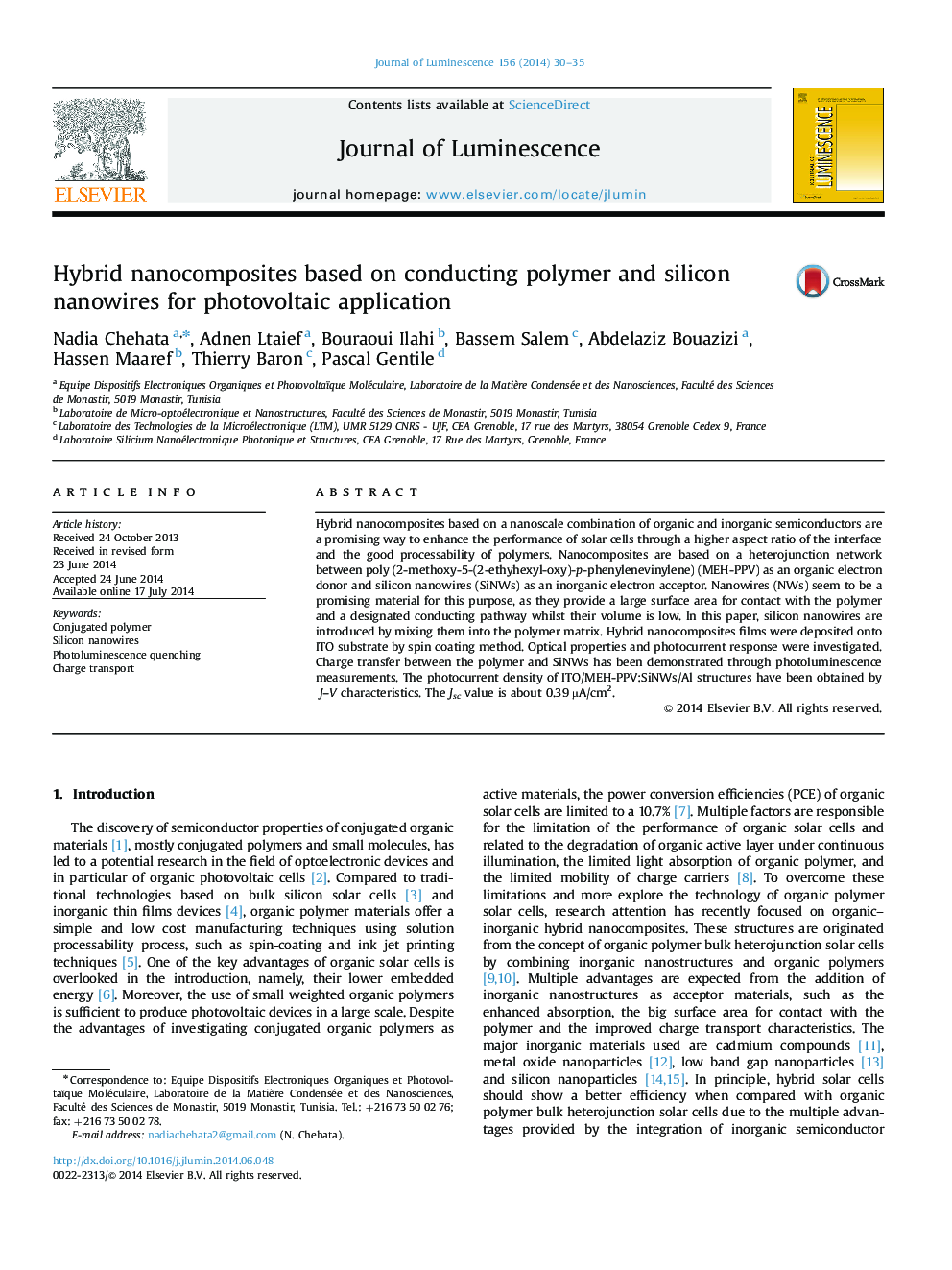| Article ID | Journal | Published Year | Pages | File Type |
|---|---|---|---|---|
| 5399833 | Journal of Luminescence | 2014 | 6 Pages |
Abstract
Hybrid nanocomposites based on a nanoscale combination of organic and inorganic semiconductors are a promising way to enhance the performance of solar cells through a higher aspect ratio of the interface and the good processability of polymers. Nanocomposites are based on a heterojunction network between poly (2-methoxy-5-(2-ethyhexyl-oxy)-p-phenylenevinylene) (MEH-PPV) as an organic electron donor and silicon nanowires (SiNWs) as an inorganic electron acceptor. Nanowires (NWs) seem to be a promising material for this purpose, as they provide a large surface area for contact with the polymer and a designated conducting pathway whilst their volume is low. In this paper, silicon nanowires are introduced by mixing them into the polymer matrix. Hybrid nanocomposites films were deposited onto ITO substrate by spin coating method. Optical properties and photocurrent response were investigated. Charge transfer between the polymer and SiNWs has been demonstrated through photoluminescence measurements. The photocurrent density of ITO/MEH-PPV:SiNWs/Al structures have been obtained by J-V characteristics. The Jsc value is about 0.39 µA/cm2.
Related Topics
Physical Sciences and Engineering
Chemistry
Physical and Theoretical Chemistry
Authors
Nadia Chehata, Adnen Ltaief, Bouraoui Ilahi, Bassem Salem, Abdelaziz Bouazizi, Hassen Maaref, Thierry Baron, Pascal Gentile,
